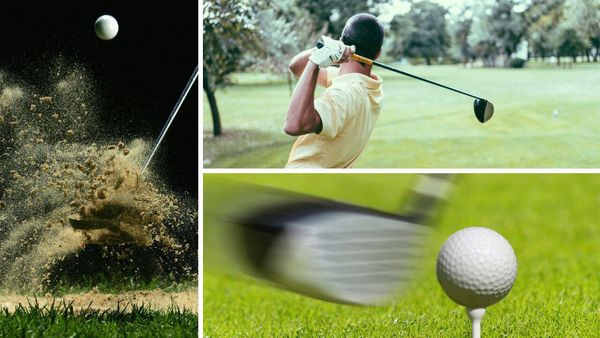Golf is a challenging sport. You have to have the perfect swing, the perfect follow-through, and the perfect ball flight. And that's just to hit the ball! Once you've finally managed to make contact with the ball, you still have to contend with the greens.
Achieving a green in regulation (GIR) can be the difference between winning and losing a match and shooting lower scores. But what exactly is GIR? And why is it so important.
Greens in Regulation Defined
Greens in regulation (GIR) is a stat that measures how often a golfer hits the green in regulation. It's usually expressed as a percentage, and it's one of the most important stats in golf.
Greens in regulation (GIR) is defined as the number of times a golfer lands on the green in two shots under par. That means with 2 putts he can make a par. Let's take a closer look.
You tee off on the first hole. You hit a beautiful drive to the right side of the fairway. You hit your second shot to the center of the green on the Par 4. You're off to a good start. One hole played and one green in regulation.
Hole #2 is a 181 yard par 3. You strike a perfect 5 iron to the green - 15 feet from the hole. That's another GIR.
Hole #3 is a short Par 5. You miss the faiway but hit a good second shot just short of the green. You pitch up your third shot onto the green. Great start - thats a GIR percentage of 100% on your first three holes.
Why Is It Important?
The answer is simple: because hitting greens is how you score.
According to a recent article on Golf.com, "Here’s how many greens in regulation you should hit per round, based on handicap" here are some useful stats on GIR based on your handicap.
- 5 Handicap - Should hit about 8 greens in regulation
- 10 Handicap - Should hit about 6 greens in regulation
- 15 Handicap - Should hit about 4 or 5 greens in regulation
Your GIR percentage is one of the most important factors in determining your score. The average golfer has a GIR percentage of about 30%. The best golfers in the world have a GIR percentage of around 70% with the PGA leaders sometimes over 80%. As you can see, there's a big difference between being an average golfer and being a pro. If you want to take your game to the next level, improving your GIR percentage is a good place to start.
So for the average golfer missing the green 70% of the time puts a lot of stress on your short game and increases the liklihood of posting a bigger number than you should. When you miss the green, you're going to have to scramble to make up for it. Scrambling is when you have to get up-and-down from off the green, and often it can be more difficult than hitting the green from the fairway.
However, there are times when you miss a green but you're on the fringe, you're putting and you're closer to the hole than your playing partner who reached the green in regulation.
So, if you can hit more greens, you're going to have more chances to make birdies and eagles and of course two putt for par. And if you can hit more greens, you're going to have a lower score and a better chance to win. That's why GIR is such an important stat; it directly correlates to scoring. Oh and let's not forget about the confidence hitting all these greens will do for the rest of your game.
How Can I Improve My GIR Percentage?
There are a few things you can do to improve your GIR percentage. One is to make sure you're using the right clubs for your shots. One tip for the amateur - always make sure you're are taking enough club. One more club is almost always better than one less club. Another is to focus on your accuracy and make sure you're hitting your target. Finally, it's important to have proper course management. This means knowing when to go for broke and when to play it safe. If you can master these three things, you'll be well on your way to shooting lower scores and improving your GIR percentage.
Greens in regulation is an important part of golf. It's essential for scoring well and giving yourself a chance to win. If you want to improve your GIR percentage, focus on taking enough club, hitting your target, and having proper course management. Do these things and you'll be well on your way to shooting lower scores and taking your game to the next level.
Now that you're hitting more greens you need to start making more putts. Se below.










Member discussion